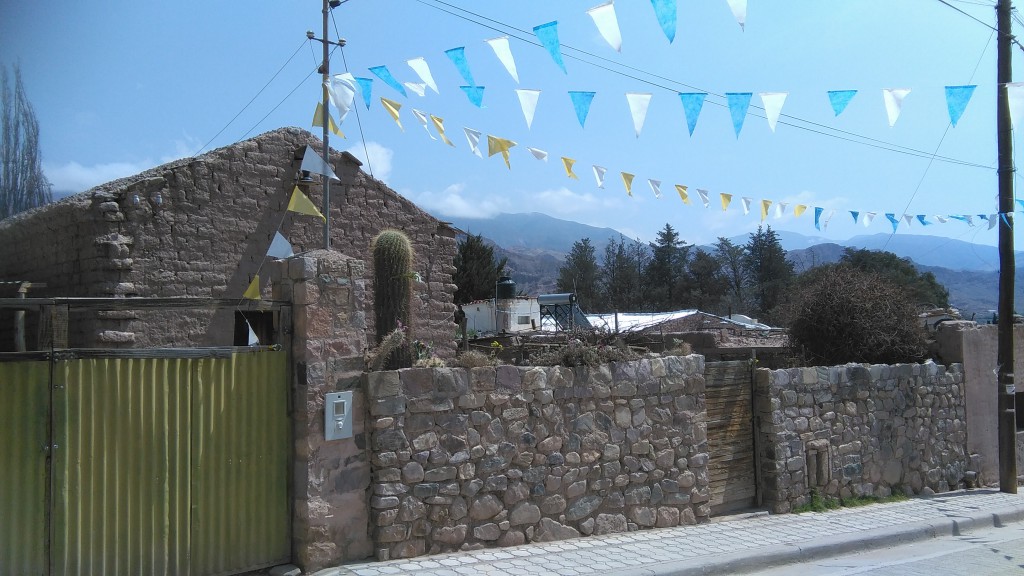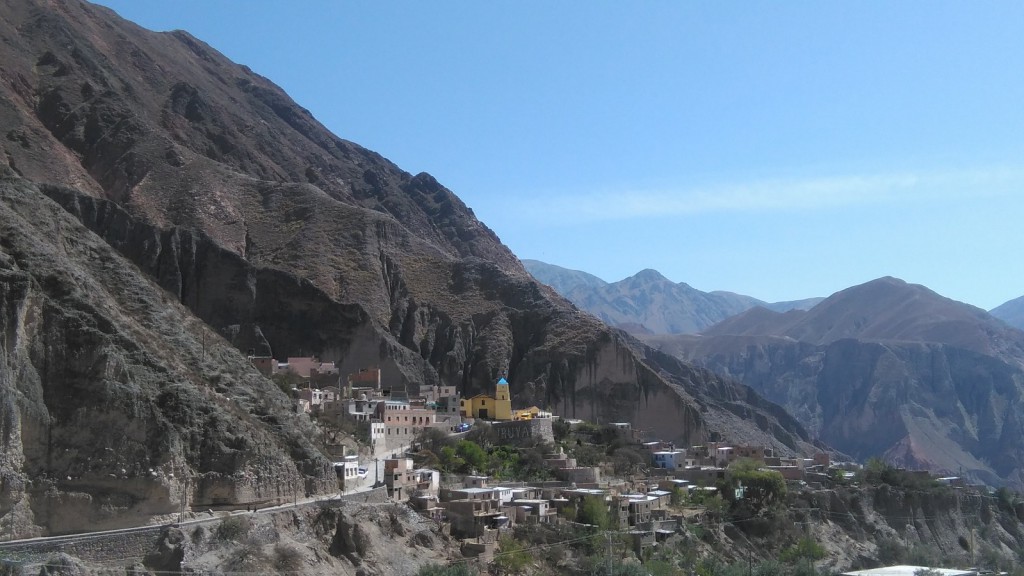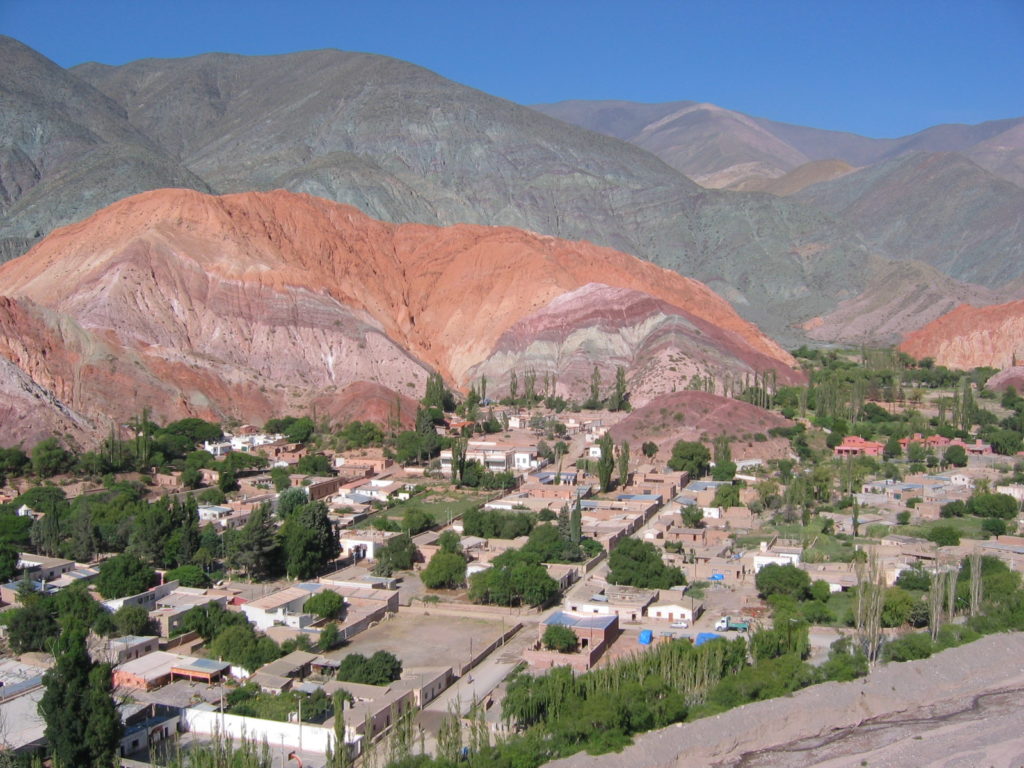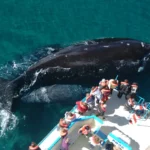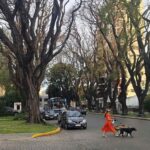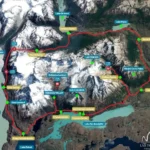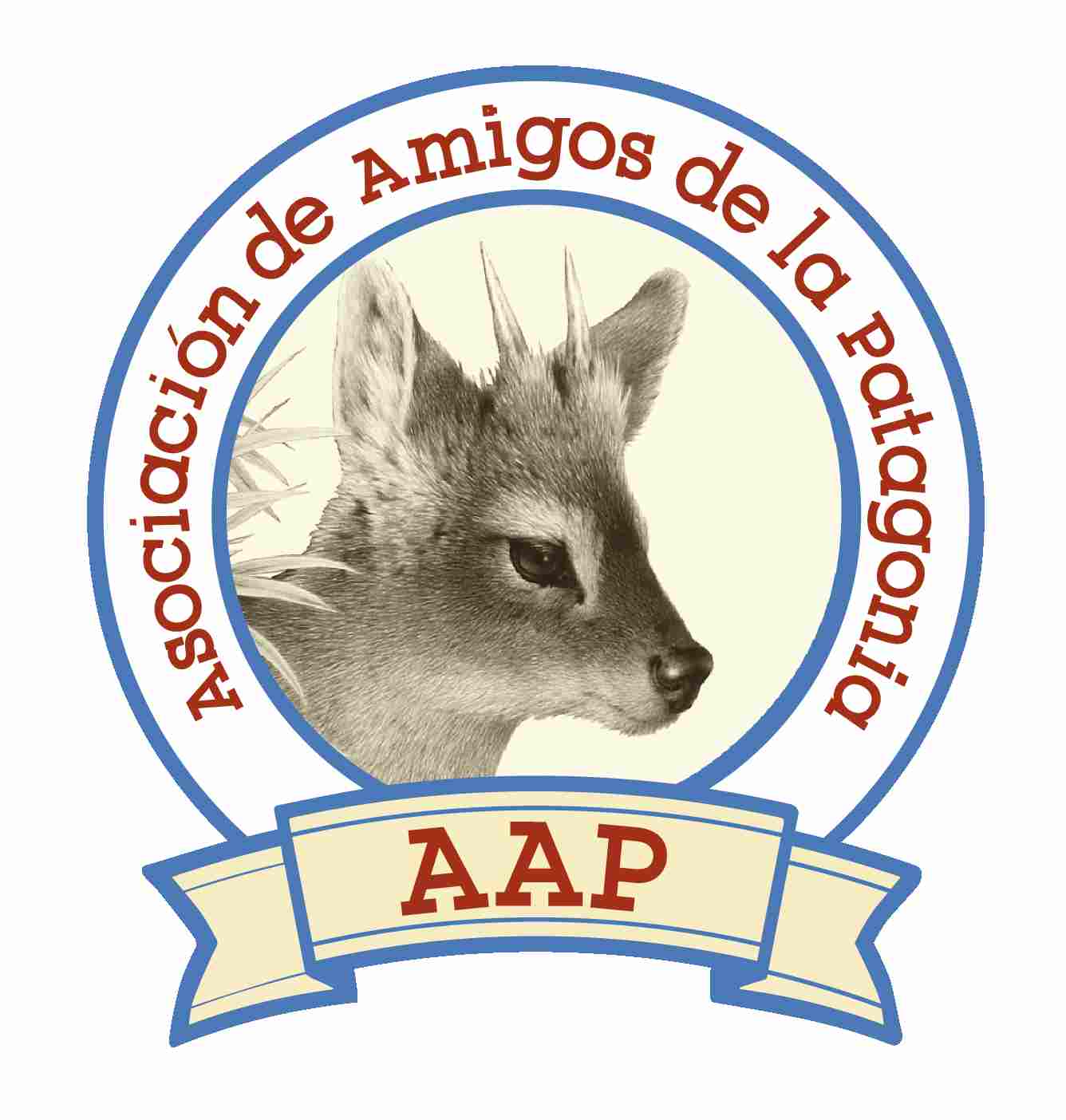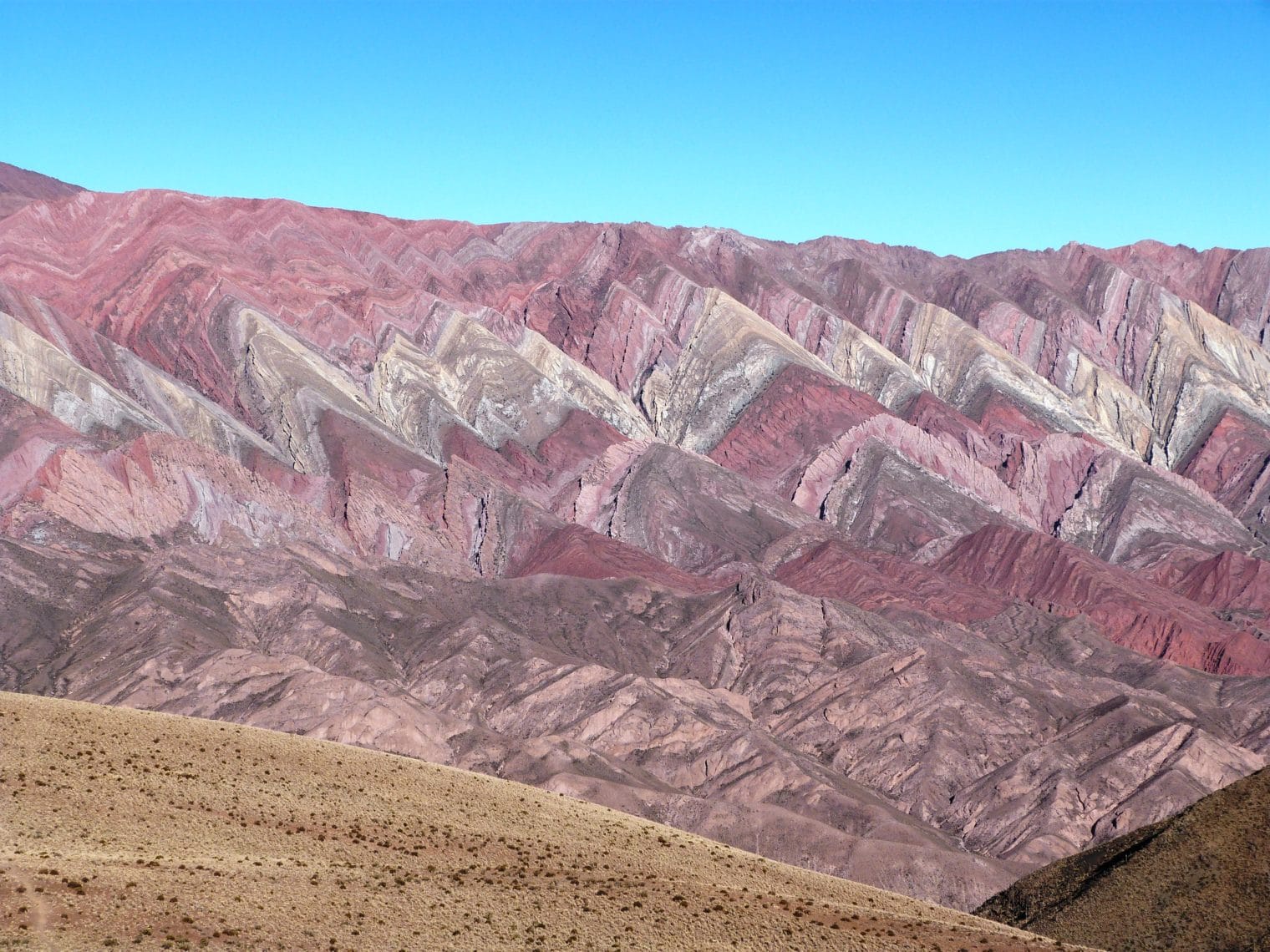
Humahuaca Gorge
In northwestern Argentina, the magnificent Quebrada de Humahuaca is known for its breathtaking beauty and extensive cultural history. About 150 kilometers of this canyon’s length are enclosed by soaring peaks and painted hills that are different colors of red, yellow, and green. Due to its significant cultural importance, “La Quebrada” was named a UNESCO World Heritage Site in 2003.
Tilcara, Humahuaca, Purmamarca, and other villages
Purmamarca, which lies at the foot of the Seven Colors Hill (Cerro de los Siete Colores), is a must for any visitor that would like to visit Jujuy. It actually lies a little bit further west of the gorge, but we could say that is actually part of it.
The charming village of Tilcara is one of the primary draws in the Quebrada de Humahuaca. Here, tourists will be able to see the stunning indigenous remains like the Pucará de Tilcara as well as incredible well-preserved colonial buildings. With various artisanal stores and galleries displaying the area’s cultural past, the town is also a hotspot for local artists.
The village of Humahuaca, which was once a significant commerce hub along the Inca route, is another must-see location. The Independence Square, Plaza Independencia, which is flanked by beautifully painted structures from the colonial era and the iconic San Francisco de Asís cathedral, is the major draw here.
Visitors may see the beautifully preserved colonial church in Uquía, which has some of Argentina’s greatest examples of colonial-era religious art.
Excursions and other places to visit
Excursions start usually from Salta city or Jujuy city, through full day tours that introduce you to the main highlights of Quebrada Humahuaca within the day. If you have the chance, the best choice is to stay at least one night at the Gorge, so you can get to know the area in the best possible way.
One of the activities – not in the Quebrada, but near of it – you shouldn’t miss, is to visit the impressive Salinas Grandes, one of the most visited destinations in the region of the Puna de Jujuy. An incredible place where the white landscape blends with the intense blue sky, where you can observe the extraction process of table salt.
With its breathtaking landscapes and varied flora and wildlife, the Quebrada de Humahuaca is a delight for nature enthusiasts. It is a well-liked location for hiking, camping, and bird watching, where tourists may see indigenous species like the Andean condor and the eye-catching Taruca deer.
Indigenous groups in the area, such the Omaguaca and the Quechua, have long preserved their ancient ways of life. Through interactive tours and cultural activities, visitors may discover more about their practices, traditions, and way of life.
Hidden among the hills, surrounded by two rivers and at 2780 meters above sea level: there is the magical town of Iruya. Its adobe and stone houses lean against the mountains as if they were an extension of the earth. Its narrow cobblestone streets are as sweet as they are melancholic. Climbing up to the viewpoint, the panoramic view of the mountains and the town is imposing, magical.
The visit to Iruya starts from the beautiful Humahuaca, where you can not miss the Serranía de El Hornocal, where a hill with 14 colors will surprise you!
How to reach
If you come from Buenos Aires, you count with direct flights to Salta city or Jujuy city. Furthermore, direct flights connect frequently Iguazu with Salta city. Additionally, the Quebrada can be connected with Atacama (Chile) through the Jama’s pass, and with Bolivia through the pass of La Quiaca-Villazón. If you drive to the south, Ruta 40 and other roads will lead you to the epic Calchaquí Valley.
Places to stay in Quebrada de Humahuaca
The Quebrada de Humahuaca offers a range of lodging and dining choices, from premium hotels to inexpensive lodging.
Some suggestions for premium accommodation could be Manantial del Silencio in Purmamarca, Hotel Huacalera in Huacalera, and Las Marías Hotel Boutique in Tilcara – among other alternatives.
Less high-end but still nice: Los Colorados, Casa de Piedra, and Marquez de Tojo (all in Purmamarca).
What to eat
Traditional steakhouses in Argentina as well as regional eateries providing genuine regional food are also alternatives for dining. Traditional Argentine cuisine is served in La Posta de Tilcara, while wonderful regional fare is served at El Horno near Humahuaca. All across the region, street food sellers and food trucks serve delectable morsels and munchies.
Best time to visit
The Quebrada de Humahuaca can be visited all year round, being the best time of the year, spring/autumn. If you come in February (summer), the Carnival will be an interesting time to learn about the local culture. However, some areas of Northern Argentina are rainy during summer. Winter is good to visit, but you need to know that in the High Plateau (Altiplano) you’ll have low temperatures and a huge thermal amplitude.
Summing up, the Quebrada de Humahuaca is a must-visit location for anybody interested in learning more about the natural beauty and cultural heritage of northwest Argentina. It is the ideal place for nature lovers, history aficionados, and tourists looking for a tranquil escape because of its rich cultural legacy, breathtaking natural beauty, and variety of activities.
Organizing your trip
We design tailor made trips in Argentina, and would love to help you with yours!
We invite you to explore some of our travel samples for Argentina (including the North):
Other posts you may like:
- Northern Argentina travel guide
0






